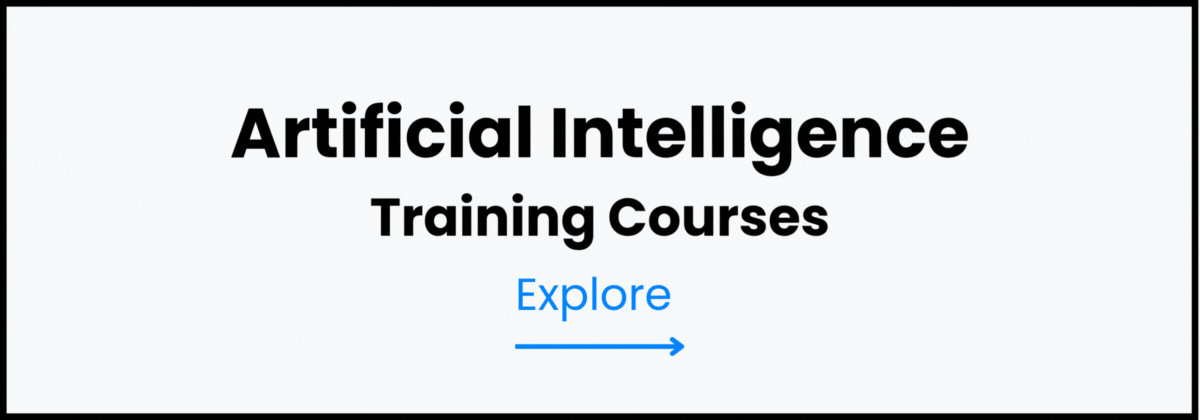How is AI Used In Internal Audit?
AI in Internal Audit and Control Testing
Understanding how AI is used in internal audit has become essential as organizations deal with growing data volumes, complex risks, and rapid operational changes. Artificial intelligence is transforming the internal audit function by automating repetitive tasks, analyzing massive datasets instantly, and delivering insights that traditional audit methods often miss. Instead of relying solely on manual checks or small samples, AI enables auditors to evaluate entire data populations continuously and with higher accuracy.
AI’s role in internal audit includes supporting control testing, identifying anomalies, monitoring compliance, and improving the precision of risk assessments. Machine learning models can detect patterns that signal fraud, operational inefficiencies, or policy breaches, while natural language processing (NLP) tools help auditors review contracts, emails, and reports more efficiently. This shift is redefining internal audit from a backward-looking evaluation to a real-time, intelligence-driven assurance function.
The evolution from manual, sample-based audits to continuous, data-driven auditing is a major milestone for the profession. Audit teams are increasingly adopting AI because traditional methods cannot keep up with the scale, speed, and complexity of modern business operations. AI allows auditors to focus on analysis, strategy, and value creation while technology handles labor-intensive tasks and enhances assurance quality. ➡️ Artificial Intelligence (AI) Training Courses
As a result, internal audit functions that integrate AI become more proactive, efficient, and effective in identifying risks and strengthening organizational governance.
Why AI Is Transforming Internal Audit Functions
Internal audit teams are under more pressure than ever to provide deeper insights, faster analysis, and stronger assurance across increasingly digital organizations. This is why AI in auditing has become a pivotal force in modern audit modernization. As businesses generate massive volumes of operational, financial, and compliance data, traditional manual audits can no longer keep pace with the scale and complexity of today’s control environments.
Digital transformation has introduced new systems, automated workflows, and interconnected processes—all of which require continuous monitoring rather than periodic, sample-based reviews. Audit teams must now evaluate not just whether controls exist, but whether they operate effectively in real time. This shift toward a digital internal audit model demands tools capable of scanning entire datasets, identifying anomalies instantly, and highlighting risks that would previously go undetected.
Regulators are also raising expectations. Organizations are now expected to demonstrate stronger risk visibility, faster issue remediation, and more comprehensive assurance coverage. AI helps meet these demands by improving accuracy, reducing human error, and providing continuous oversight across critical business functions.
With growing pressure for speed, intelligence, and audit quality, AI enables internal audit functions to modernize their approach—moving from manual testing to automated, forward-looking assurance that is more efficient, reliable, and strategically valuable. ➡️AI Governance, Risk and Compliance Course
Key Applications of AI in Internal Audit
AI is reshaping internal audit by enhancing accuracy, reducing manual workload, and enabling continuous, data-driven assurance. The following applications show how AI strengthens audit efficiency, reliability, and strategic value.
-
Automated Data Extraction and Audit Preparation
AI simplifies audit readiness by automating the collection, processing, and cleaning of large datasets. Instead of manually extracting data from spreadsheets or multiple systems, automated audit data processing tools gather information instantly and prepare it for testing.
This eliminates sampling limitations, reduces human error, and accelerates overall audit preparation AI workflows—allowing auditors to focus on analysis and insights rather than manual data work.
-
Continuous Auditing and Real-Time Monitoring
AI enables continuous auditing by monitoring transactions, system logs, and user activities in real time. Instead of performing periodic audits, internal audit teams gain ongoing visibility into control performance and potential risks.
With continuous auditing AI, auditors receive real-time audit insights that highlight anomalies, deviations, or policy violations the moment they occur—strengthening assurance and response agility.
-
AI-Powered Risk Assessment and Prioritization
Machine learning models enhance risk assessment by analyzing historical data, behavior patterns, and operational trends. AI-driven risk assessment helps identify emerging issues sooner and evaluates which processes or regions carry the highest risk exposure.
With predictive audit analytics, audit plans become more data-driven, allowing teams to prioritize areas that require immediate attention and allocate resources more effectively.
-
Automated Control Testing and Validation
AI automates repetitive control tests across financial, operational, and IT domains. This increases consistency, improves precision, and expands audit coverage.
Automated control testing verifies whether procedures work as intended, while intelligent controls monitoring ensures ongoing validation throughout the audit period. This reduces the reliance on manual sampling and strengthens overall control assurance.
-
Fraud Detection and Anomaly Analysis
AI detects fraud by identifying unusual patterns, outliers, suspicious transactions, or hidden relationships that human auditors may overlook. These tools reduce false positives and enhance detection accuracy.
Through AI fraud detection and advanced anomaly detection audits, auditors gain deeper visibility into potential misconduct and can respond to risks before they escalate.
-
Advanced Audit Analytics & Visualization
AI-driven dashboards transform raw data into meaningful insights. These tools support pattern discovery, risk clustering, and root-cause analysis.
With audit analytics AI and predictive insight dashboards, auditors can visualize trends, compare performance across units, and identify systemic weaknesses faster—leading to better strategic recommendations. ➡️Compliance, Audits and Continuous Improvement Course
Benefits of Using AI in Internal Audit and Control Testing
Integrating AI into internal audit delivers substantial operational and strategic advantages, helping organizations strengthen governance, improve accuracy, and enhance overall assurance quality. These AI audit benefits go beyond automation—they enable deeper insights, faster execution, and more reliable oversight of internal controls. By reducing manual workload and improving visibility across the organization, AI allows audit teams to focus on high-value analysis rather than repetitive tasks.
Key benefits include:
-
Increased speed and audit coverage:
AI analyzes entire data populations rather than small samples, enabling broader coverage and faster completion of audit procedures.
-
Higher accuracy and fewer errors:
Automated analytics reduce human mistakes and improve the reliability of audit conclusions, resulting in more improved internal controls.
-
Continuous assurance instead of periodic reviews:
AI enables real-time monitoring, allowing audit teams to identify issues throughout the year rather than waiting for scheduled audit cycles.
-
Better risk visibility and early detection:
Advanced algorithms uncover trends, anomalies, and hidden risks that manual testing may overlook, improving overall risk awareness.
-
Reduced audit fatigue and manual workload:
Automation removes repetitive tasks such as data extraction, control testing, and report preparation, allowing auditors to focus on strategic insights.
These benefits collectively make AI essential for a modern, agile, and insight-driven internal audit function. ➡️Internal Controls & Risk-Based Auditing Course

Conclusion
AI is reshaping assurance functions across every industry, offering internal auditors unprecedented speed, visibility, and analytical depth. Understanding how AI is used in internal audit highlights a central truth: AI does not replace auditors—it empowers them. By automating repetitive tasks, scanning entire datasets instantly, and uncovering risks that traditional methods often miss, AI enhances the precision and impact of internal audit work.
With AI-driven insights, audit teams can shift from reactive, sample-based procedures to proactive, continuous assurance. This supports stronger governance, faster decision-making, and improved control effectiveness. When combined with professional judgment, ethical oversight, and strategic thinking, AI becomes a powerful catalyst for more reliable and future-ready audit functions.
Organizations that embrace AI responsibly will strengthen their internal audit and control testing processes—positioning themselves for better risk management, higher efficiency, and stronger long-term resilience.
Frequently Asked Questions (FAQs)
-
How is AI used in internal audit?
AI is used to automate data analysis, identify anomalies, perform continuous monitoring, and support more accurate control testing. It enables auditors to review entire datasets rather than limited samples and enhances risk detection, efficiency, and audit quality.
-
Does AI automate all control testing?
No. AI automates repetitive, rules-based, and high-volume control tests, but human auditors are still required to validate results, interpret insights, and assess complex or judgment-based controls. AI assists the process—it does not fully replace manual evaluation.
-
Can AI detect fraud better than traditional methods?
In many cases, yes. AI identifies patterns, behavioral anomalies, and hidden relationships that traditional sampling might miss. Machine learning and anomaly detection models can uncover fraud indicators earlier and with greater accuracy, while still requiring human review.
-
What types of controls can AI test?
AI can test a wide range of controls, including financial controls, operational controls, IT access controls, segregation of duties, transaction approvals, policy compliance, and workflow validations. It is especially effective for high-volume and repetitive processes.
-
Will AI replace internal auditors?
AI will not replace internal auditors. Instead, it enhances their capabilities by handling data-heavy tasks, allowing auditors to focus on strategic analysis, risk insights, and governance responsibilities. Human judgment remains essential in all audit processes.
-
What challenges exist in AI-driven auditing?
Common challenges include data quality issues, integration difficulties, lack of AI expertise, overreliance on automation, and concerns around model transparency and bias. Strong governance and auditor involvement are crucial to address these risks.
-
What skills do auditors need to work with AI?
Auditors need skills in data literacy, analytics interpretation, digital tools, risk modeling, and understanding how AI algorithms function. Critical thinking, professional skepticism, and ethical awareness remain equally important.
-
What tools are used for AI-powered auditing?
AI-powered auditing uses tools such as machine learning platforms, anomaly detection systems, process mining tools, predictive analytics engines, natural language processing (NLP) tools, robotic process automation (RPA), and audit analytics dashboards.
Important Resources:
- Role of AI in Corporate Governance
- What Is Anti-Money Laundering (AML)?
- Principle of Accountability in Corporate Governance
- What Is BRM in Corporate Strategy
- Key Steps for Successful AI Implementation
- How AI Is Changing the Recruitment Process
- How is AI Used In Enterprise Risk Management (ERM)?
Explore Courses From Our Top Categories:
Leadership Training Courses – Human Resources Training Courses – GRC Training Courses – Risk Management Training Courses – Finance & Budgeting Training Courses – Training Courses in Dubai





